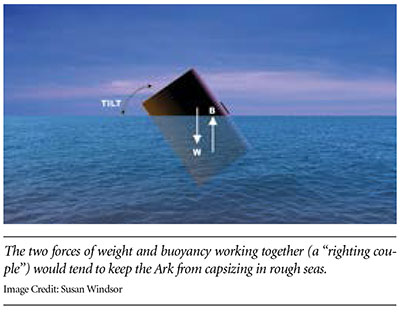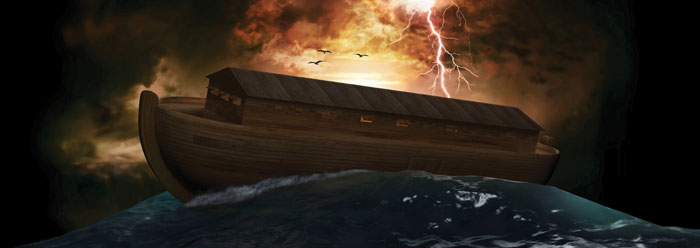Skeptics raise a serious objection to the Flood account given in Scripture: How could Noah’s Ark and its precious cargo survive the turmoil of the Flood? Wouldn't it have sunk beneath the waves, sending its cargo to a watery grave?
Without a doubt, the Flood involved unimaginable forces and processes. Simultaneously, “the fountains of the great deep” broke open (Genesis 7:11), and the resulting volcanic eruptions, earthquakes, asteroid impacts, colliding tsunamis, and underwater gravity slides all contributed a great tectonic convulsion that permanently altered the planet.
Some of the waves would have been hundreds of feet high and moved at near jet speed. Yet the Ark rode through this cataclysm safe and sound. How could it do so? Wouldn’t it have capsized? If it had, it would have spelled doom for all land-dwelling animals and the image of God in man. Satan would have won the war.
So how could the Ark have survived?
 One important thing to remember is that the Ark was not designed to go anywhere. In fact, once the whole earth was flooded, there was nowhere to go. It only had to float and keep the occupants alive. Obviously, the whole Flood account involves supernatural oversight. God was in full control. When we investigate how He exercised that control, we stand amazed.
One important thing to remember is that the Ark was not designed to go anywhere. In fact, once the whole earth was flooded, there was nowhere to go. It only had to float and keep the occupants alive. Obviously, the whole Flood account involves supernatural oversight. God was in full control. When we investigate how He exercised that control, we stand amazed.
Note the ratio of length to width of the Ark’s design: 300 cubits to 50 cubits, or approximately 450 feet long to 75 feet wide. This ratio of 6 to 1 is well known in naval design for optimum stability. Many modern naval engineers, when designing cargo ships to battleships, utilize this same basic design ratio.
The Ark’s long, slender shape would have maximized cargo space and kept the vessel pointed into wave trends, thereby minimizing chances of it being broadsided by a wave that could capsize it. If we could take a cross-section of the Ark, we would see a pair of forces consisting of the Ark’s weight acting downward and buoyancy acting upward that form what naval engineers term a “righting couple.” This pair of forces acting in opposite, but parallel, directions tends to force the vessel to “right” itself when tilted. As shown in the figure, for any degree of tilt up to 90 degrees, the couple would right the Ark and return it to an upright orientation.
Several engineering studies of Ark models have compared the design, as given in Scripture, to several other potential design ratios and plans. The most elaborate and extensive comparison was carried out by the Korea Institute of Ship and Ocean Engineering. As in each of the studies, the Ark’s design was shown to be optimum for its task and circumstances.
Scientific research confirms what the Bible says. The whole Flood account in Scripture has “the ring of truth” to it. Its Author evidently intended us to believe it.
* Dr. Morris is President of the Institute for Creation Research.
Cite this article: Morris, J. 2013. The Survival of Noah’s Ark. Acts & Facts. 42 (1): 13.




